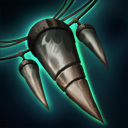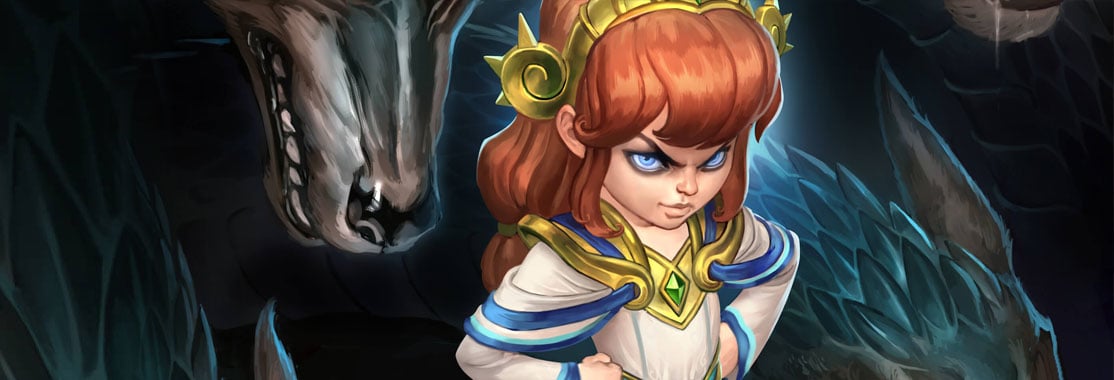Build #1
Versus Gods with 48 Magical Protections.

Build #2
Versus Gods with 73, 98 Magical Protections.

Build #3
Versus Gods with 123 - 298 Magical Protections.

All Builds Compared:
 MY COMMENTS FOR BUILD GENERATION #1
MY COMMENTS FOR BUILD GENERATION #1:
Build #1. This build, I feel, is overall excellent against Squishy targets. I would not have thought to build
 Divine Ruin
Divine Ruin unless I was up against enemies with healing, but Flat Pen appears to be extremely potent at these Protection levels. Another item in this build that surprised me was
 Typhon's Fang
Typhon's Fang. However, it becomes clear why this item comes up after some investigation. In this build, Typhon's Fang provides you with a total of 150 Power, and 10% Magical Pen on top of that. I will note, however, that there appears to be a potential bug with its stats. The base stats list that it gives +70 Magical Power; however, when running tests in Jungle Practice, I found that Typhon's Fang gives +80 Magical Power. I discovered this inconsistency when my generator showed lower damage values than what was showing up in the game. Add to that the +70 Power you get from its passive in this build, and it becomes clear why this item showed up in the generator.
I will also comment that this build is a bit of overkill (though it can have its uses should you miss an ability). In total, the standard combo will deal a total of 2,675 damage while squishy targets in the game only have around 2,000 Health.
Build #2 & Build #3. While these builds are good on paper, they are TERRIBLE in practice, and I DO NOT recommend that you try and run them. Most Smite veterans can spot the immediate flaw with these builds, which are the double stacking items in
 Warlock's Staff
Warlock's Staff and
 Book of Thoth
Book of Thoth. These two builds are a perfect testament to the differences between "Book Smart" and "Street Smart" and highlight the inherent limitations of this build generator. To correct these two builds, I reran the Build Generator two more times for these protections, once with
 Book of Thoth
Book of Thoth disabled, and once with
 Warlock's Staff
Warlock's Staff disabled. Below are the new results.
No Minimum Requirements.
Defensive Items Disabled.
Warlock's Staff Disabled.
1,107,568 Unique Combinations Tested.
|
|
Item |
Item |
Item |
Item |
Item |
Item |
|
|
|
|
|
|
|
|
|
|
|
|
|
|
|
|
|
|
|
|
|
|
|
|
No Minimum Requirements.
Defensive Items Disabled.
Book of Thoth Disabled.
1,107,568 Unique Combinations Tested.
|
|
Item |
Item |
Item |
Item |
Item |
Item |
|
|
|
|
|
|
|
|
|
|
|
|
|
|
|
|
For these two new generations, I will note that at the lower protection levels (73-148), the difference in these two builds is relatively small, but I wanted to highlight at least the Top builds for the highest protection values of each build.
Build_1 is the last Build Result with
 Book of Thoth
Book of Thoth disabled
Build_2 is the last Build Result with
 Warlock's Staff
Warlock's Staff disabled

As you can see, these two builds are nearly neck-and-neck with their damage values. I would say if you want some extra Health to go for Warlocks. Otherwise,
 Book of Thoth
Book of Thoth is entirely acceptable.
One final build Generation I would like to run in this category, is with BOTH
 Warlock's Staff
Warlock's Staff and
 Book of Thoth
Book of Thoth disabled for those who may prefer to avoid stacking items.
No Minimum Requirements.
Defensive Items Disabled.
Book of Thoth Disabled.
Warlock's Staff Disabled.
906,192 Unique Combinations Tested.
|
|
Item |
Item |
Item |
Item |
Item |
Item |
|
|
|
|
|
|
|
|
|
|
|
|
|
|
|
|
|
|
|
|
|
|
|
|
Below are the damage values of these 3 No-Stacking Builds.

I think these three results exemplify what to build against what opponent type. Build #1 for Squishies, #2 for Bruisers, #3 for Tanks. In summary, practice is the best teacher, and these results should only serve as guidelines for your builds, not the rule.
One last comparison that I'll make is to show the Top builds at 48 Protections where Warlock's Staff is disabled, where Book of Thoth is disabled, and where both are disabled. I will then repeat for Protections at 198 (since most build results seem to level out at this value) so that you can get a feel for the difference in performance between the three.
Build_1 = Top Build Result @ 48 Protections where Warlock's Staff is DISABLED
Build_2 = Top Build Result @ 48 Protections where Book of Thoth is DISABLED
Build_3 = Top Build Result @ 48 Protections where BOTH are DISABLED

When you review the builds carefully, you can see that having at least one of these items is mathematically better throughout the entire graph. However, the damage difference is arguably negligible. Below is a zoomed image, only reviewing the first 25 Protections (48 - 73) since this is the range of optimization for the builds.

Build_1 = Top Build Result @ 198 Protections where Warlock's Staff is DISABLED
Build_2 = Top Build Result @ 198 Protections where Book of Thoth is DISABLED
Build_3 = Top Build Result @ 198 Protections where BOTH are DISABLED
And lastly, the same comparison, except with the builds for very high Protection enemies.

Again you will notice that the stacking items out-perform the top build that contains none but only by a small margin.
And again, I will zoom in on the results (this time zooming in on 178 - 193 since I generated these builds for this range.

At this point in the calculations, you will see that the builds have effectively stabilized, with the 80 - 130 range having some strong contention between the two stacking builds.
I will conclude by stating that mathematically speaking, having at least one stacking item will give you more power than a build without any. However, it's worth reiterating that Maximum Power DOES NOT equal a perfect build. Scylla already has a rough early game, and stacking items can make it significantly harder for her. In the end, it comes down to experience when it comes to deciding which build to choose, and what tweaks to make them when necessary.




 Why Did I Make The Scylla Build Generator?
Why Did I Make The Scylla Build Generator? How It Works
How It Works
 Limitations
Limitations Reference Guide & Notes
Reference Guide & Notes Build Generation #1
Build Generation #1









First, create the health box where you can manually enter a health value. Let's call this box X.
Then create a box to cap the upper % damage from health, which is 7%. Let's call this box Y.
=IF(Y>0.07, 0.07, Y)
Then create the box calculating the actual % taken off of the max health. We'll call this box Z.
=ROUND(IF(Y<2000,0.02,(((Y-2000)/750)*7)/100),3)
Finally, make a final box that shows the actual damage based on the calcs. That box will have the following calc:
=X*Z
If nothing else, you'll be able to see the added damage from a Reaver proc (but only the first hit, not consecutive hits within 3s).